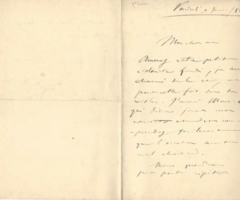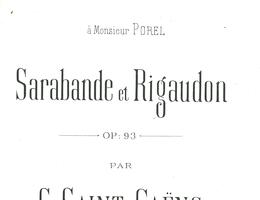Sarabande et Rigaudon op. 93
Sarabande – Rigaudon
On 28 November 1892, the Grand-Théâtre de Paris announced a new production of Molière’s Le Malade imaginaire “with Charpentier’s score, restored by Monsieur Saint-Saëns”. This theatrical event was apparently the prelude to a major editorial venture launched by the Durand firm and aimed at publishing new reference scores for the great French masters of the past (Rameau’s complete works began to appear shortly afterwards). As with an ancient monument, this “restoration” was based on a manuscript “of which only fragments remained”, which needed to be completed and made performable by contemporary musicians. A piano reduction by Gabriel Marie was published as early as 1894. In addition to two rewritten numbers (Pastorale and Gavotte) and one borrowed from Charpentier’s Médée (Chaconne), Saint-Saëns composed two other pieces for the 1892 performance, which were not, however, included in the new edition of Le Malade imaginaire. A Sarabande for string orchestra and a Rigaudon for winds and percussion appeared separately as the composer’s op. 93. In an effort to maintain the aesthetic coherence of the whole score, he drew full inspiration from the Baroque period— notably Bach’s Air from his Orchestral Suite No. 3 for the Sarabande — albeit with a contemporary orchestration. Although these pieces were not included in the Concerts Colonne’s repertoire until 1903, their performance and success in concerts organized in Marseille (December 1892) and Bordeaux (February 1898) is nevertheless documented.


